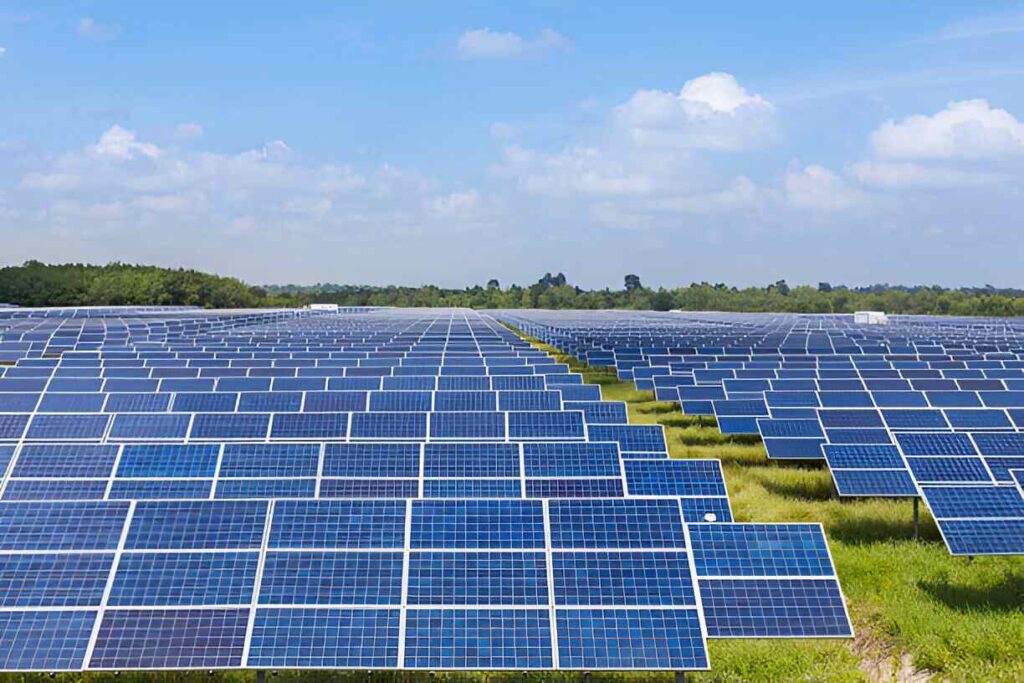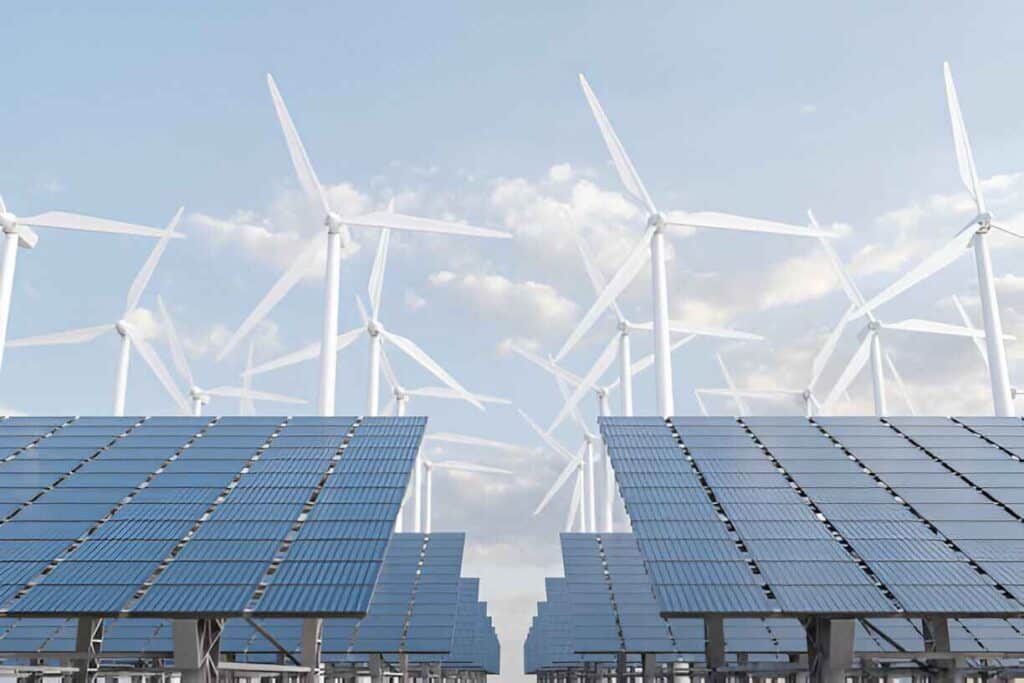Grid Connection Challenges for Solar Farms in the UK: Overcoming Barriers
Explore the grid connection challenges for solar farms in the UK and discover strategies for overcoming barriers to ensure efficient integration of renewable energy into the national grid. Solar energy is growing fast in the UK. Connecting solar farms to the grid, though, has challenges.
Grid connection is vital for solar energy to reach homes and businesses. Yet, many hurdles exist. From technical issues to regulatory barriers, these challenges can delay or even stop solar projects. Understanding these obstacles is crucial for developers and policymakers.
In this post, we will explore the key grid connection challenges for solar farms in the UK. By the end, you’ll have a clear picture of the current landscape and the steps needed to overcome these barriers. Let’s dive in and shed light on this important issue.

Technical Barriers
Solar farms in the UK face several technical barriers when connecting to the grid. These barriers can hinder the growth and efficiency of solar energy projects. Two major challenges are grid capacity issues and infrastructure limitations.
Grid Capacity Issues
The grid often struggles to handle new solar farms. Existing capacity may be insufficient. This creates delays in getting approval for grid connection. Solar farm developers may find it hard to secure a spot. The grid’s capacity limits can slow the transition to renewable energy. It impacts project timelines and costs.
Infrastructure Limitations
The current infrastructure may not support new solar farms. Upgrading infrastructure can be expensive and time-consuming. Old equipment and technology can be a major hurdle. Solar farms need modern infrastructure to connect efficiently. Without updates, the grid cannot handle the load. This limitation affects the performance and reliability of solar energy.
Regulatory Challenges
Solar farms in the UK face numerous regulatory challenges, which can be a significant hurdle for developers. Navigating these regulations can be complex and time-consuming. Let’s dive into some of the key regulatory challenges that solar farm developers encounter.
Approval Processes
The approval process for solar farms in the UK is another major challenge. Obtaining the necessary permits and approvals can be a lengthy and complicated process.
Developers must navigate multiple layers of bureaucracy. This often involves coordinating with local councils, environmental agencies, and other stakeholders. Each of these entities has its own set of requirements and timelines.
Delays in the approval process can lead to increased costs and project setbacks. It’s crucial for developers to plan for these delays and build flexibility into their project timelines.
Have you ever faced regulatory challenges in your own projects? How did you overcome them? Share your experiences in the comments below. Your insights could help others navigate these complex waters.
Economic Factors
Connecting solar farms to the grid in the UK involves several economic factors. These factors impact the feasibility and profitability of solar projects. Investors and developers need to understand the costs and funding opportunities available.
Cost Of Connection
The cost of connecting a solar farm to the grid can be high. Developers must pay for infrastructure, such as cables and transformers. There are also fees for grid access and maintenance. These costs can vary depending on location and the size of the solar farm.
In urban areas, connection costs may be higher due to dense infrastructure. Rural areas might have lower costs but longer connection distances. Evaluating these costs is crucial before starting a solar project.
Environmental Impact
Solar farms in the UK face grid connection challenges. These issues can slow down the adoption of renewable energy. Efficient solutions are needed to support green energy growth.
Solar farms are becoming increasingly popular in the UK as a sustainable energy solution. However, connecting these farms to the grid presents several environmental challenges. Let’s dive into some of these challenges, focusing on land use and ecological considerations. ###
Land Use Concerns
Using large areas of land for solar farms can be controversial. These installations often require a significant amount of space, which can disrupt local communities and landscapes. Imagine fields you’ve known all your life suddenly filled with solar panels. This transformation can feel jarring and lead to resistance from local residents.
Moreover, the best spots for solar farms are usually flat, open areas. These are often the same places that are valuable for agriculture. Hence, setting up a solar farm can mean taking away land that could otherwise grow food. This raises questions about balancing renewable energy needs with food production. ###
Ecological Considerations
Solar farms can also impact local ecosystems. The construction process disturbs the soil and can harm local wildlife. Animals that once roamed freely might find their habitats fragmented. Take birds, for example. They might fly into solar panels, mistaking them for water. This can lead to injuries or even death. However, not all impacts are negative.
Some solar farms create new habitats for wildlife. By planting wildflowers around the panels, you can attract bees and other pollinators. But is this enough to offset the initial disruption? It’s essential to weigh the benefits against the potential harm. Have you ever wondered how solar farms near you are affecting the local environment? Next time you pass one, consider both the visible and hidden impacts.
Community Opposition
Community opposition is a significant challenge for solar farms in the UK. Local communities often have strong feelings about new developments. This resistance can delay or even halt projects.
Understanding the concerns of the community is crucial. It helps to address their worries and find common ground. Below, we explore two main aspects of community opposition: public perception and local resistance.
Public Perception
Public perception plays a big role in community opposition. Many people have mixed feelings about solar farms. Some see them as a positive step towards green energy. Others worry about the impact on the landscape.
Misconceptions can fuel opposition. For example, some believe solar farms are noisy or dangerous. Educating the public about the benefits and safety of solar energy is essential. Clear communication can help change negative perceptions.
Local Resistance
Local resistance often comes from concerns about property values and aesthetics. Residents may worry that a solar farm will lower their home’s value. They might also dislike how it changes the view.
Community meetings and consultations can help ease these concerns. Involving locals in the planning process can make a big difference. They feel heard and valued, which can reduce resistance.
Solar farm developers should also consider the visual impact. Using landscape screening and thoughtful design can help blend the solar farm into the surroundings. This can make the project more acceptable to the local community.
Technological Solutions
Grid connection challenges for solar farms in the UK include limited grid capacity and high connection costs. These issues can delay projects and increase expenses.
## Technological Solutions Solar farms in the UK face numerous grid connection challenges. However, technological solutions can help overcome these hurdles. Let’s explore two key technologies: smart grid technology and energy storage systems. ###
Smart Grid Technology
Smart grid technology offers a way to optimize the distribution of electricity. It ensures efficient energy flow from solar farms to households and businesses. Imagine driving on a road with sensors that adjust traffic lights to reduce congestion. Similarly, smart grids use sensors to monitor energy flow, making real-time adjustments. You benefit from this technology by experiencing fewer power outages and more stable electricity supplies. ###

Energy Storage Systems
Energy storage systems are crucial for managing solar power. They allow excess energy produced during sunny periods to be stored and used when needed. Think of it like saving money in a bank. Instead of wasting extra energy, you store it for later use. Battery storage is a popular method.
It provides a reliable backup when solar production dips due to cloudy weather. Consider how much more dependable your solar energy supply could be with a robust storage system. How can these technological solutions affect your daily life? What other technologies could further improve solar farm connections in the UK?
Future Outlook
The future of grid connection for solar farms in the UK is both promising and challenging. Technological innovations and potential policy changes are set to shape this landscape. As we look ahead, it’s crucial to understand how these factors will impact solar energy projects.
Innovations In Solar Technology
Advancements in solar technology are rapidly transforming the industry. New materials and designs are increasing efficiency and reducing costs. For example, bifacial solar panels that capture sunlight on both sides are becoming more popular.
Storage solutions are also improving. Batteries are getting better at storing energy, which helps manage supply and demand. This can make solar farms more reliable even when the sun isn’t shining.
Have you noticed how solar panels are appearing in unexpected places? From rooftops to floating on water bodies, innovative installations are making solar energy more accessible. These innovations could ease grid connection challenges by diversifying energy sources.
Potential Policy Changes
Government policies play a significant role in the growth of solar farms. Potential changes in regulations could either support or hinder development. For instance, subsidies and incentives can encourage investment in solar projects.
On the other hand, stricter environmental regulations might impose additional costs. However, these can also drive innovation in cleaner technologies. Policy changes are a double-edged sword, impacting both growth and operational strategies.
What if policymakers focused more on grid infrastructure? Upgrading and expanding the grid could make it easier for solar farms to connect. This can be a game-changer for future solar projects.
In conclusion, the future outlook for grid connection challenges in the UK’s solar farms hinges on innovation and policy. By staying informed and adaptable, you can navigate these changes effectively.
Frequently Asked Questions
How Does A Solar Farm Connect To The Grid In The Uk?
A solar farm connects to the UK grid via inverters, transformers, and substations. It converts solar energy into electricity.
What Are The Challenges Of Solar Grid Integration?
Solar grid integration faces challenges like intermittency, storage issues, grid stability, high initial costs, and infrastructure upgrades.
Is Solar Power A Threat To Uk Farmland?
Solar power is not a significant threat to UK farmland. It uses less than 0. 1% of agricultural land. Solar farms can coexist with agriculture, promoting sustainability.
How To Connect Solar Panels To The Grid In The Uk?
Connect solar panels to the grid in the UK by hiring a certified installer. Obtain a G98/G99 certification. Notify your Distribution Network Operator (DNO). Install a grid-tied inverter. Ensure proper metering for export tariffs.
Conclusion
Overcoming grid connection challenges is crucial for UK solar farms. Reliable grid connections ensure consistent energy supply. These efforts support the transition to renewable energy. Stakeholders must collaborate to find innovative solutions. Improved policies and infrastructure are essential. By addressing these issues, solar farms can thrive.
This helps the UK achieve its clean energy goals. Sustainable energy is within reach, with continued dedication and innovation.
